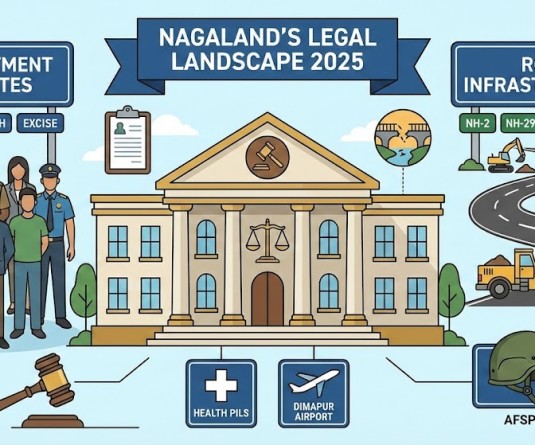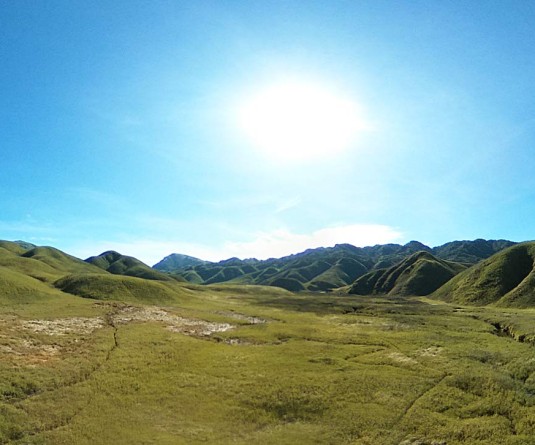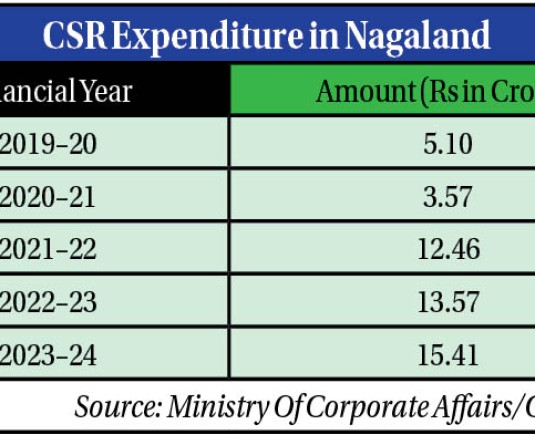Source: “NSS 77th Round Survey on Land and Livestock Holdings of Households and Situation Assessment in Nagaland & Nagaland Debt and Investment January - December 2019,” Directorate of Economics and Statistics, Nagaland.

Small landholdings and jhum cultivation dominates
Moa Jamir
Dimapur | June 22
Agriculture continues to be the backbone of rural Nagaland, with a recent survey indicating that nearly two-thirds of households fall under the agricultural category.
The 77th Round of the National Sample Survey (NSS) highlighted that 66.25% of rural households are engaged in farming activities. Out of an estimated 2.35 lakh (235,300) rural households, approximately 1.56 lakh (155,900) are agricultural households, while around 79,500 fall under the non-agricultural category.
The survey, conducted between January and December 2019, also sheds light on prevalent small landholdings and the ongoing practice of jhum (shifting) cultivation across the state.
Social Group and agri-dependency
As per the percentage distribution of agricultural and non-agricultural households by social groups, the demographic profile of the social group stood at around: Scheduled Tribes (STs) constituted most households at 2,28,800 households or 97.24%.
Out of those, 1,53,200 (66.96%) were designated agricultural households, while 75,600 or 33.04% were classified as non-agricultural households.

At around 4,100 households, Scheduled Castes (SCs) were shown to constitute 1.74% of the rural households. The SCs showed much lower agricultural participation, with only 17.07% (700) of households engaged in farming and over 82% (3,400) relying on non-agricultural activities.
Despite a relatively small overall share, the highest proportion of households engaged in agriculture were from the Other Backward Classes (OBCs), with 83.34% (2,000 out of 2,400) classified as agricultural households, despite their relatively small overall share among rural households.


Dominance of small landholdings and jhum
Interestingly, the survey highlighted a significant concentration of small and marginal landholdings in rural Nagaland. A striking 73.82% of rural households (1,73,700 out of 2,35,300) possess less than 1 hectare of land. This includes 0.01–0.40 ha: 78,100 households (33.19%) and 0.40–1.00 ha: 95,600 households (40.63%), designated by the survey as ‘small holdings.’
This indicated that small and marginal holdings form the overwhelming majority, limiting the scope for mechanised or large-scale agriculture. Marginal holdings (≤0.01 ha) were also minimal—just 500 households (only 0.21% of the total) fall into this category, indicating that almost all rural households own more than minimal fragments of land. Landholdings above 2 hectares were rare: 2.01–4.00 ha: 12,500 households (5.31%); 4.01–10.00 ha: only 400 households (0.17%); and none above 10 ha.
This skewed land distribution reflected the dominance of smallholder farming, a key contributor to the economic vulnerability of rural households.
Among non-agricultural households, land ownership was similarly limited, indicating a reliance on wage labour, services, or informal occupations.
The data reflected a curious situation, as private landownership is considered one striking feature of Nagaland, though the percentage-wise distribution seems to be minimal.
The NSS data also sheds light on land use trends, notably the continued practice of jhum (shifting) cultivation, particularly among marginal and small landholders, with around 40% of the total operational land area used for jhum.
Non-agricultural uses, including housing, infrastructure, or fallow land, account for 27.5% of t
otal land use.
Mixed land use, involving both crop cultivation and animal/fishery farming, was most common among semi-
medium landholders, suggesting a degree of resource diversification.
For medium-sized holdings (4–10 ha), land use is evenly split between agricultural and non-agricultural purposes.

Context and methodology
While the national data was released earlier, the state-specific data, titled “Land and Livestock Holding of Households and Situation Assessment of Agricultural Households in Nagaland,” appeared to be published in March, was recently made accessible on the Department of Economics & Statistics’ website.
The NSS 77th Round defined an agricultural household as one with at least one member self-employed in agriculture during the past 365 days and producing agricultural output worth over Rs 4,000. Activities such as rural artisan work or forest gathering were excluded.
Data was collected in two rounds: Visit 1 (January–August 2019) and Visit 2 (September–December 2019), covering the agricultural year 2018–19. Estimates reflect household status as of the midpoint of the survey period, the report stated.
Combined aggregates were computed using averages for six-month reference data and weighted means (8:4) for 30-day references, it added.






